Sabino Canyon 7/14/19 0430
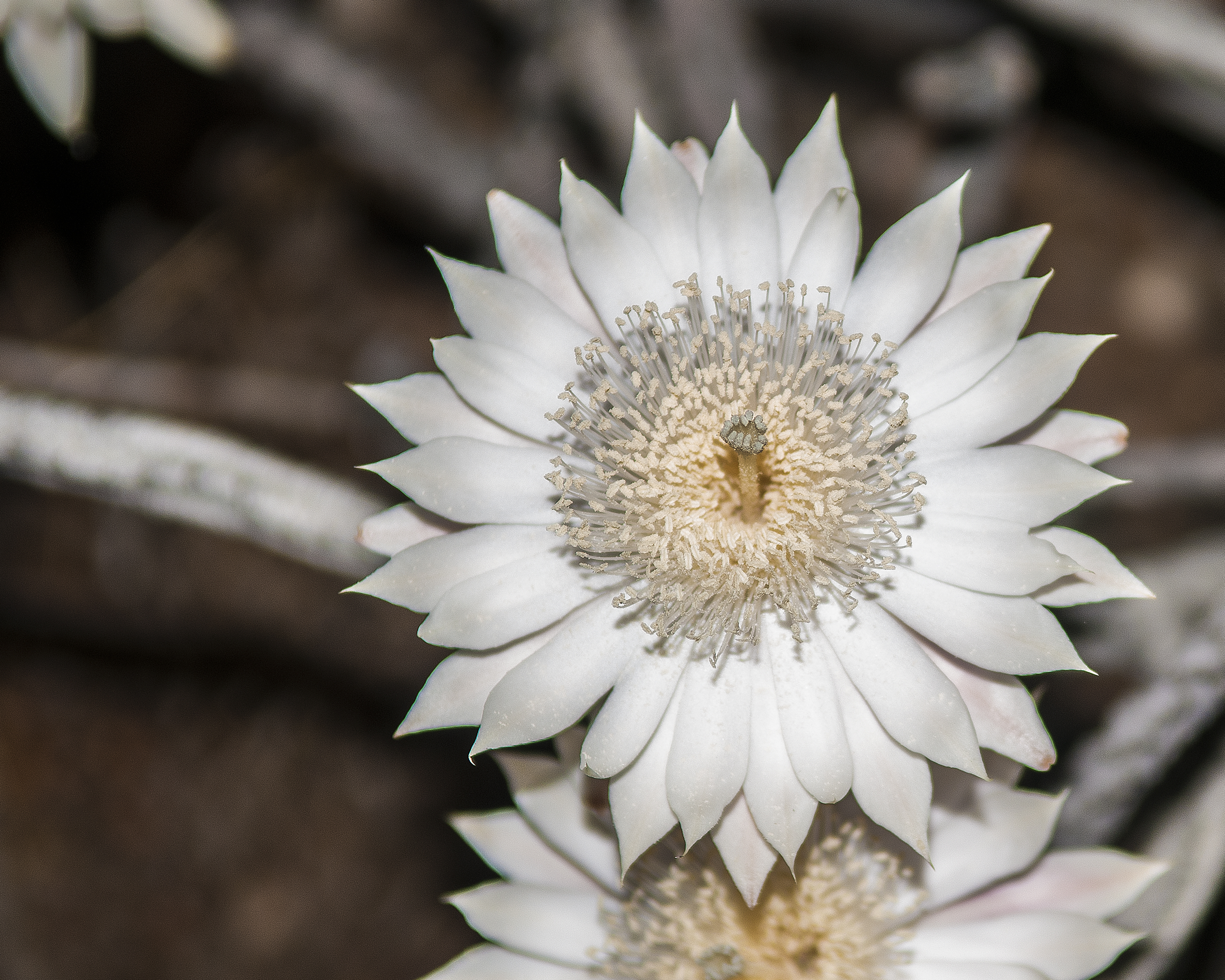 Sabino Canyon 7/14/19 0430
Sabino Canyon 7/14/19 0430
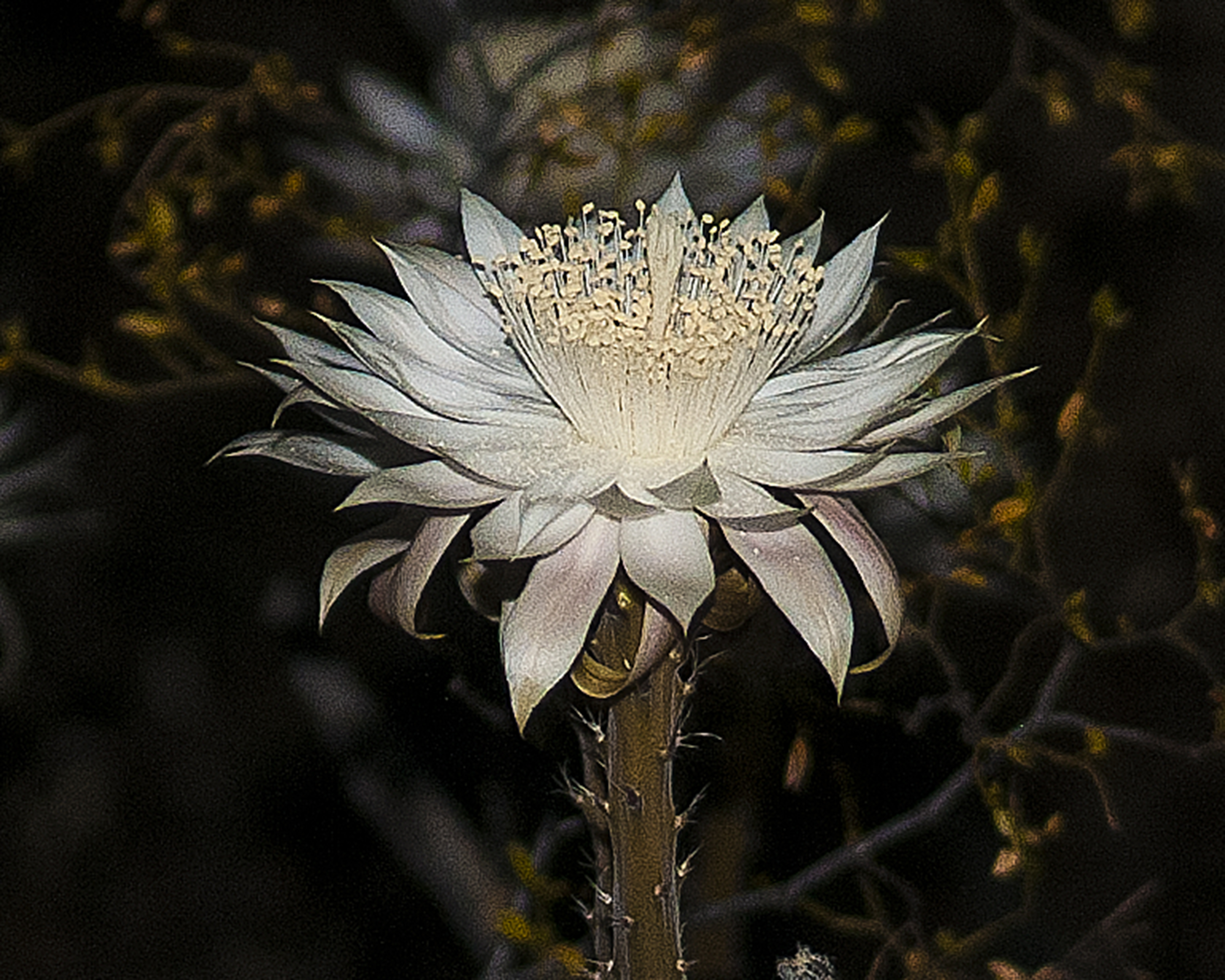 Sabino Canyon 7/14/19 0430. Polinator arrives
Sabino Canyon 7/14/19 0430. Polinator arrives
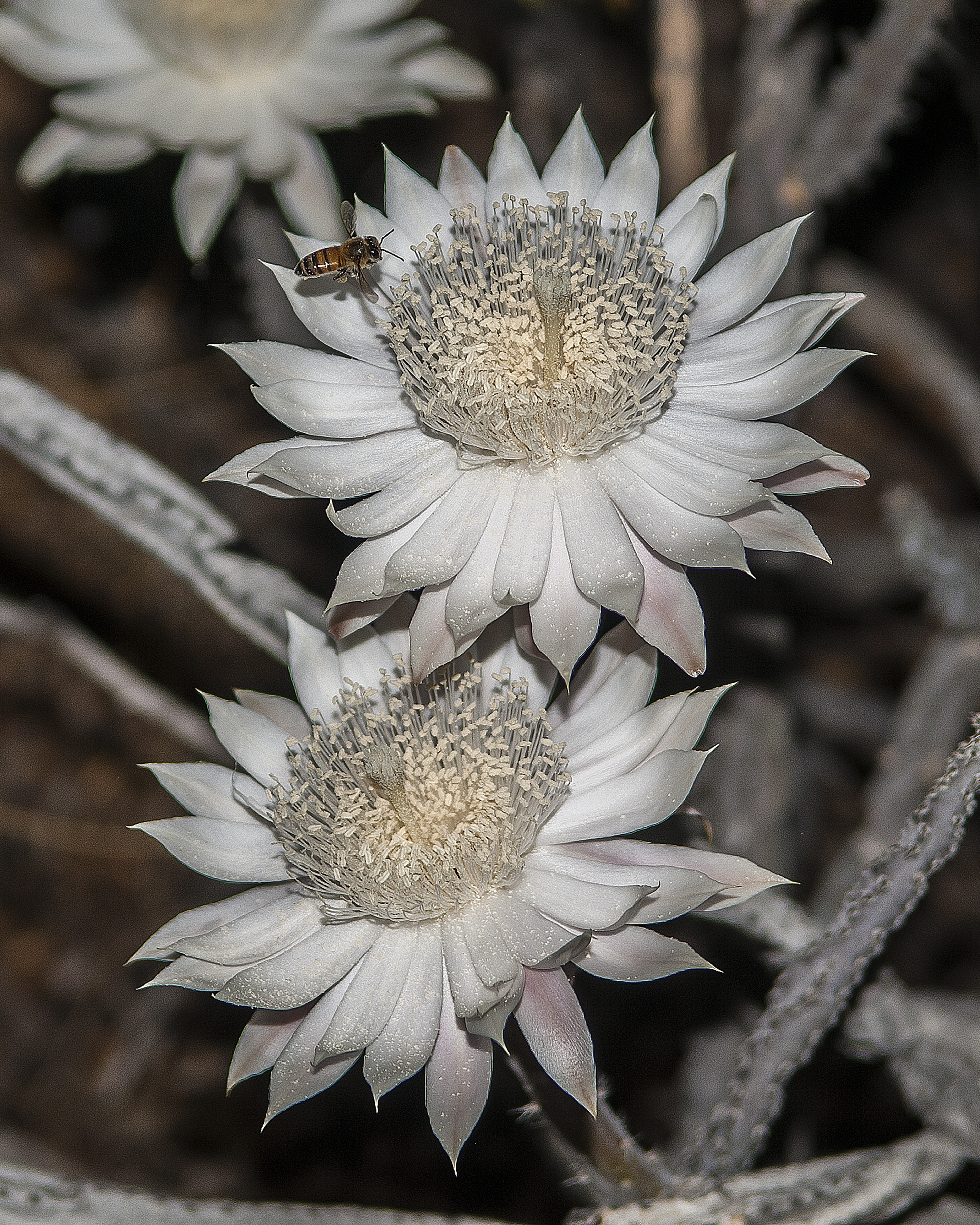 Sabino Canyon 7/14/19 0430
Sabino Canyon 7/14/19 0430
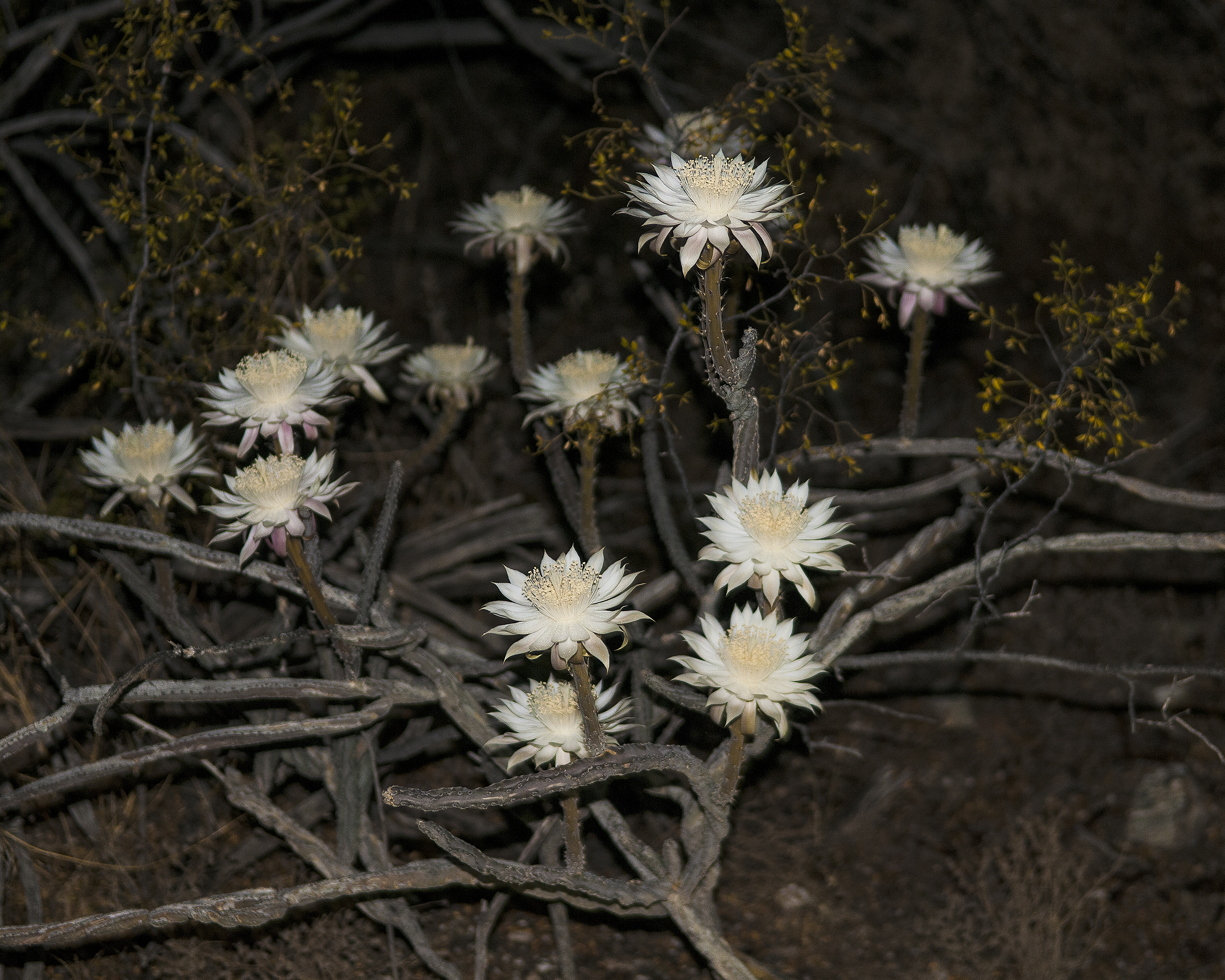
Fruit. Sabino Canyon 10/6/19
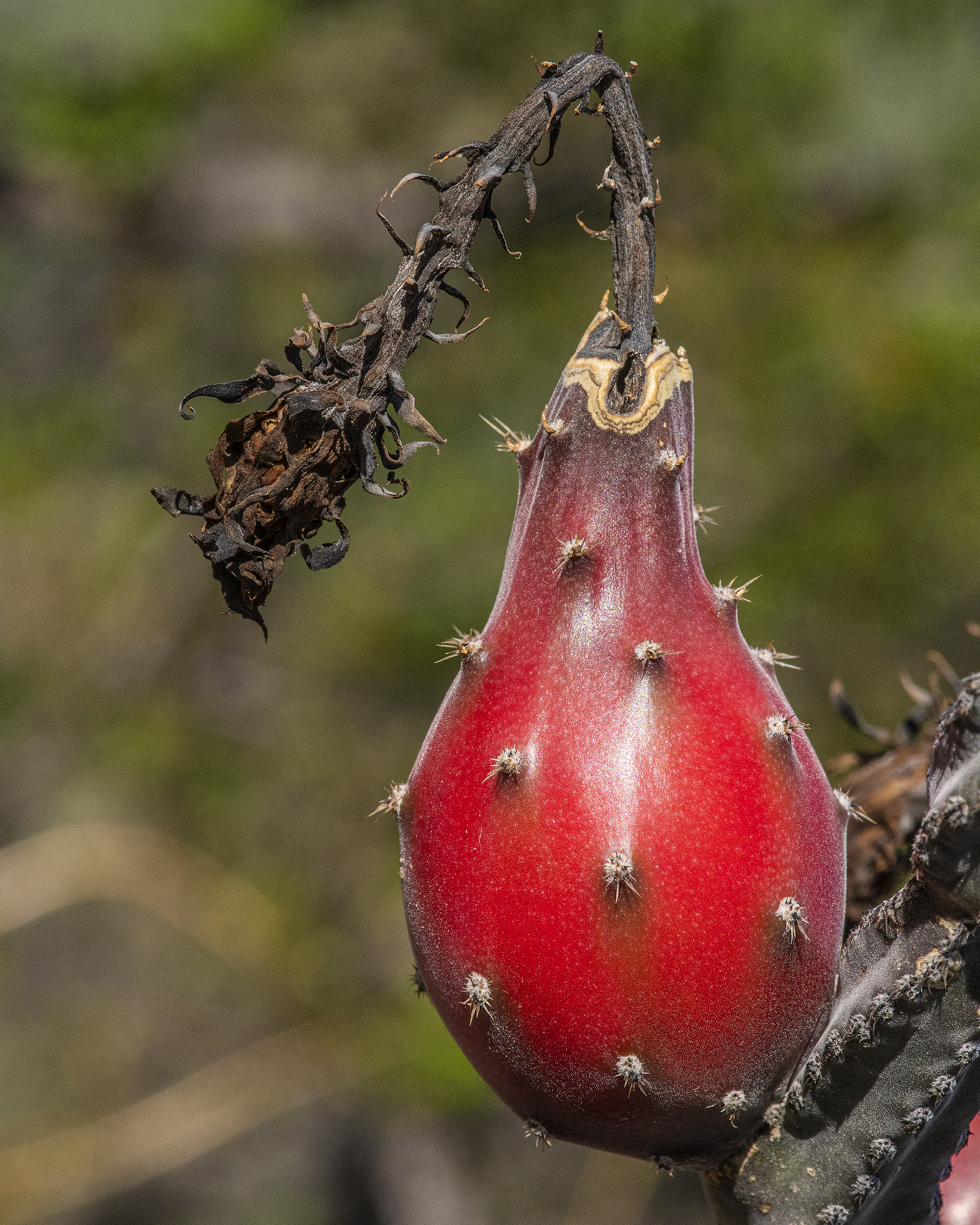
EARLIER GROWING SEQUENCE
Sabino Canyon 7/8/19
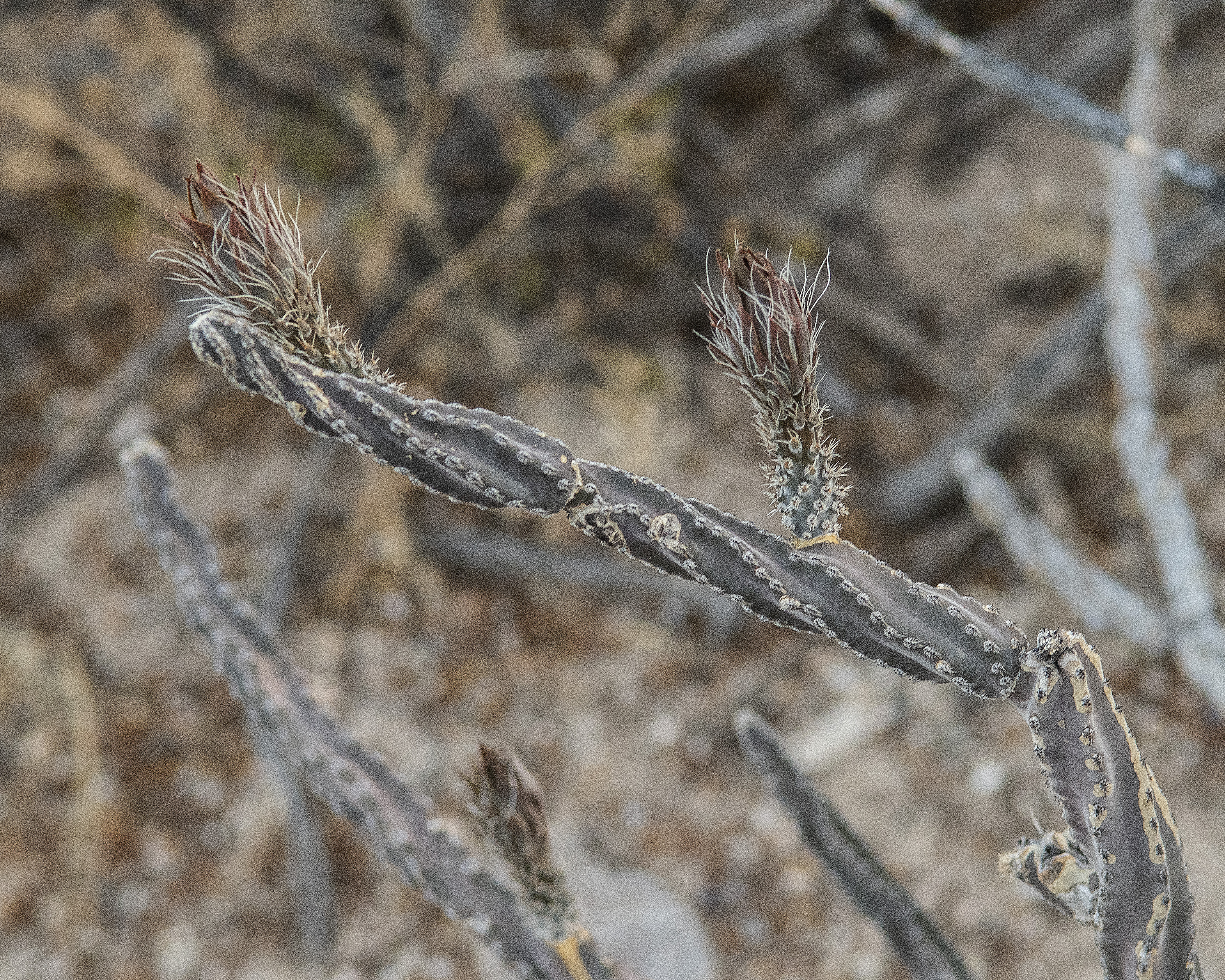 Sabino Canyon 7/8/19
Sabino Canyon 7/8/19
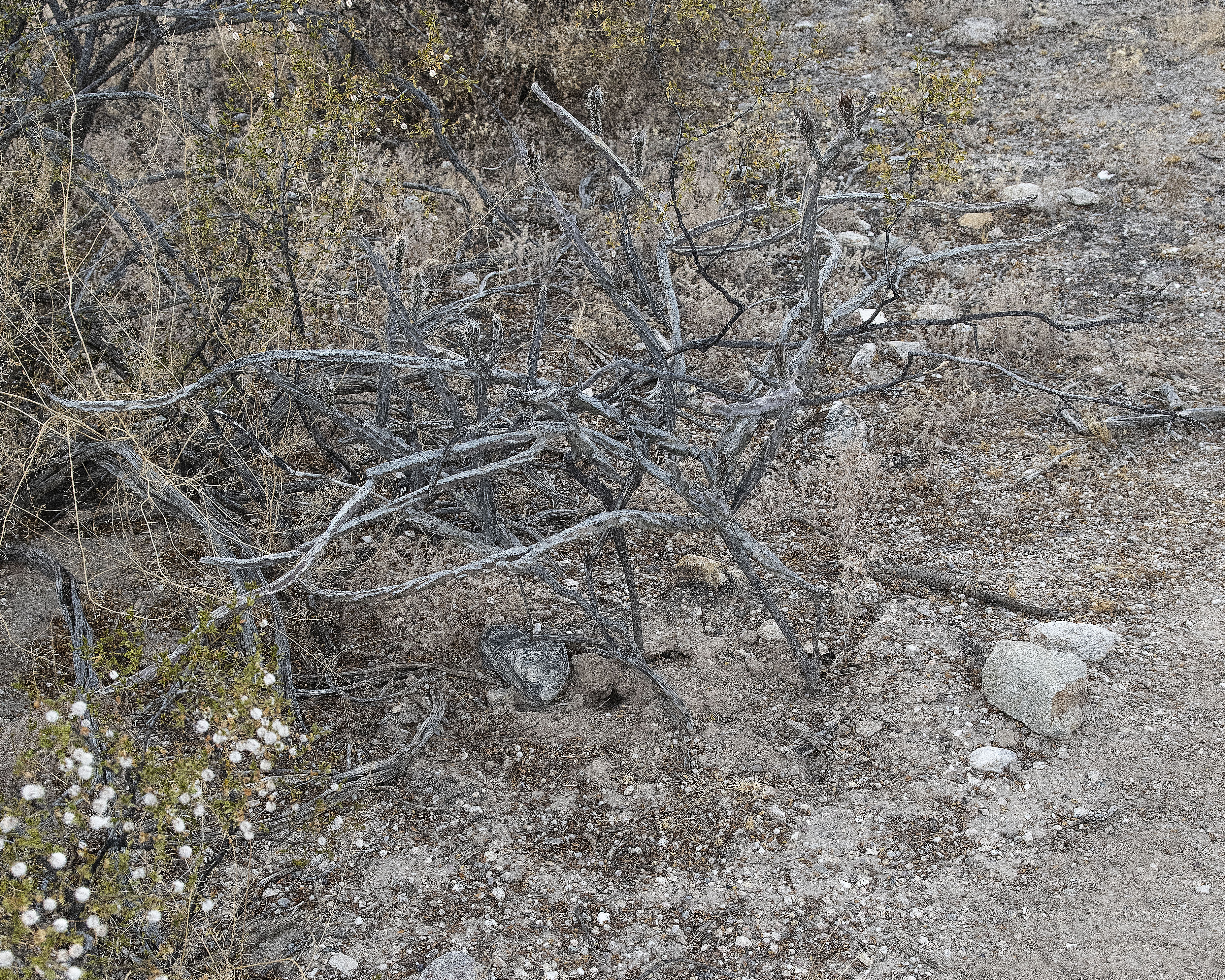 Sabino Canyon 7/10/19
Sabino Canyon 7/10/19
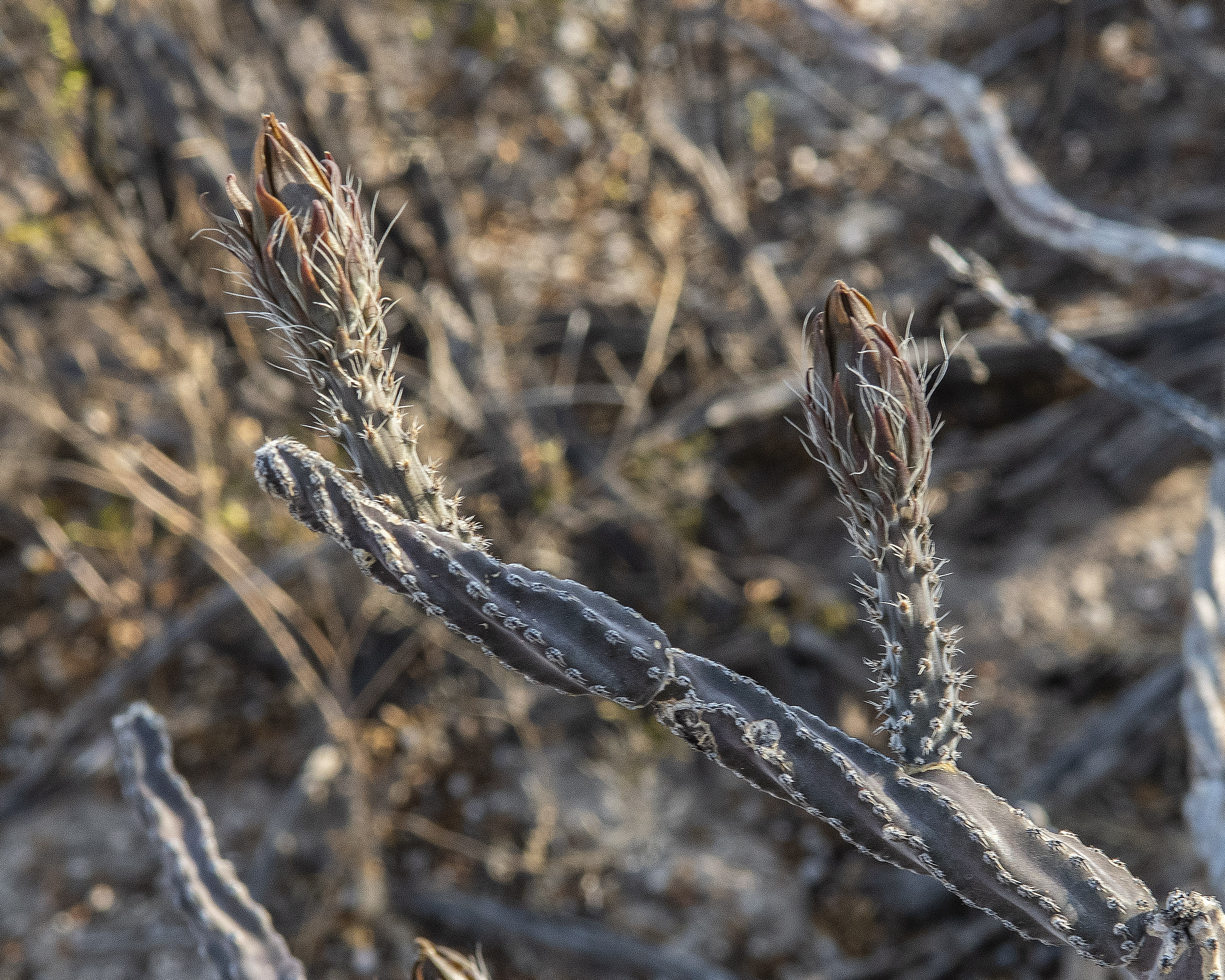 Sabino Canyon 7/12/19
Sabino Canyon 7/12/19
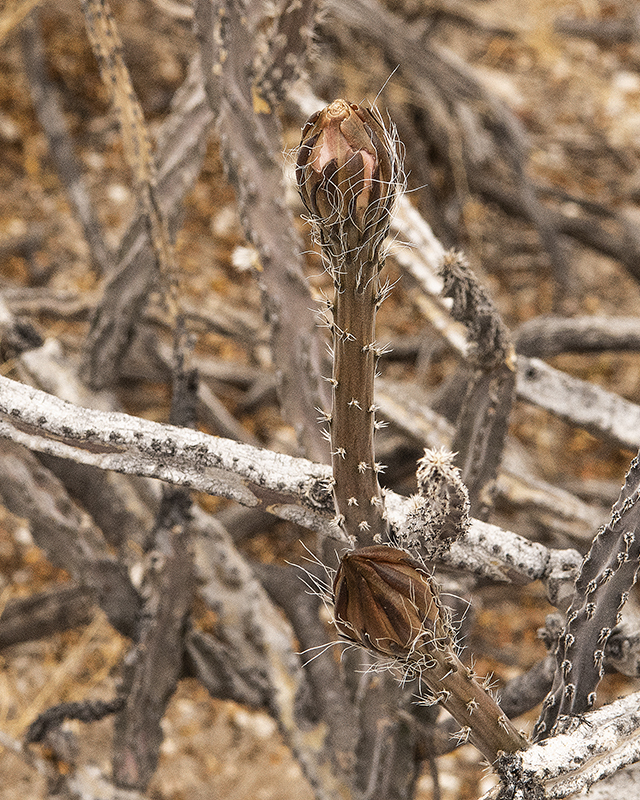 Sabino Canyon 7/12/19
Sabino Canyon 7/12/19
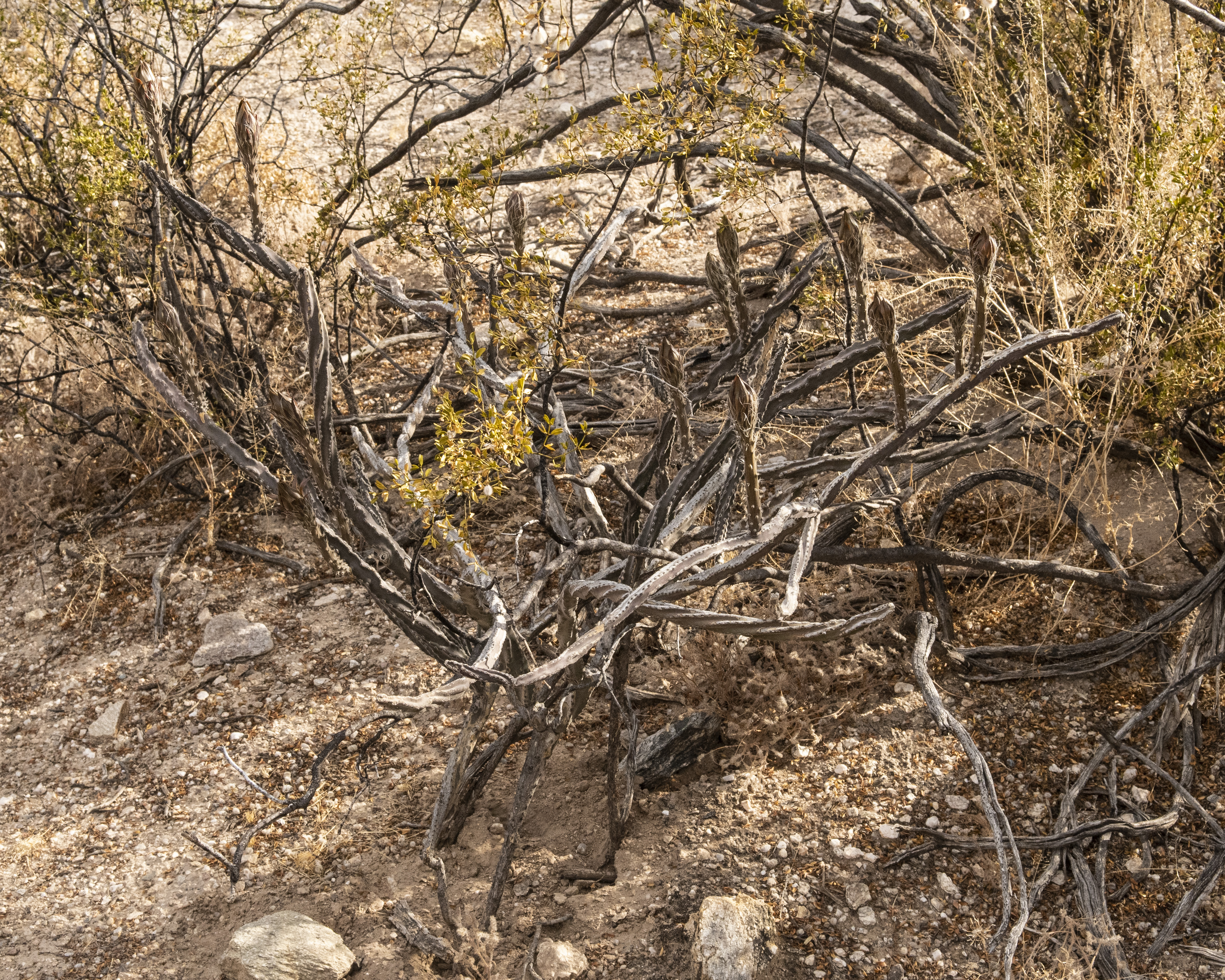 Sabino Canyon 7/13/19, 8:30 PM
Sabino Canyon 7/13/19, 8:30 PM
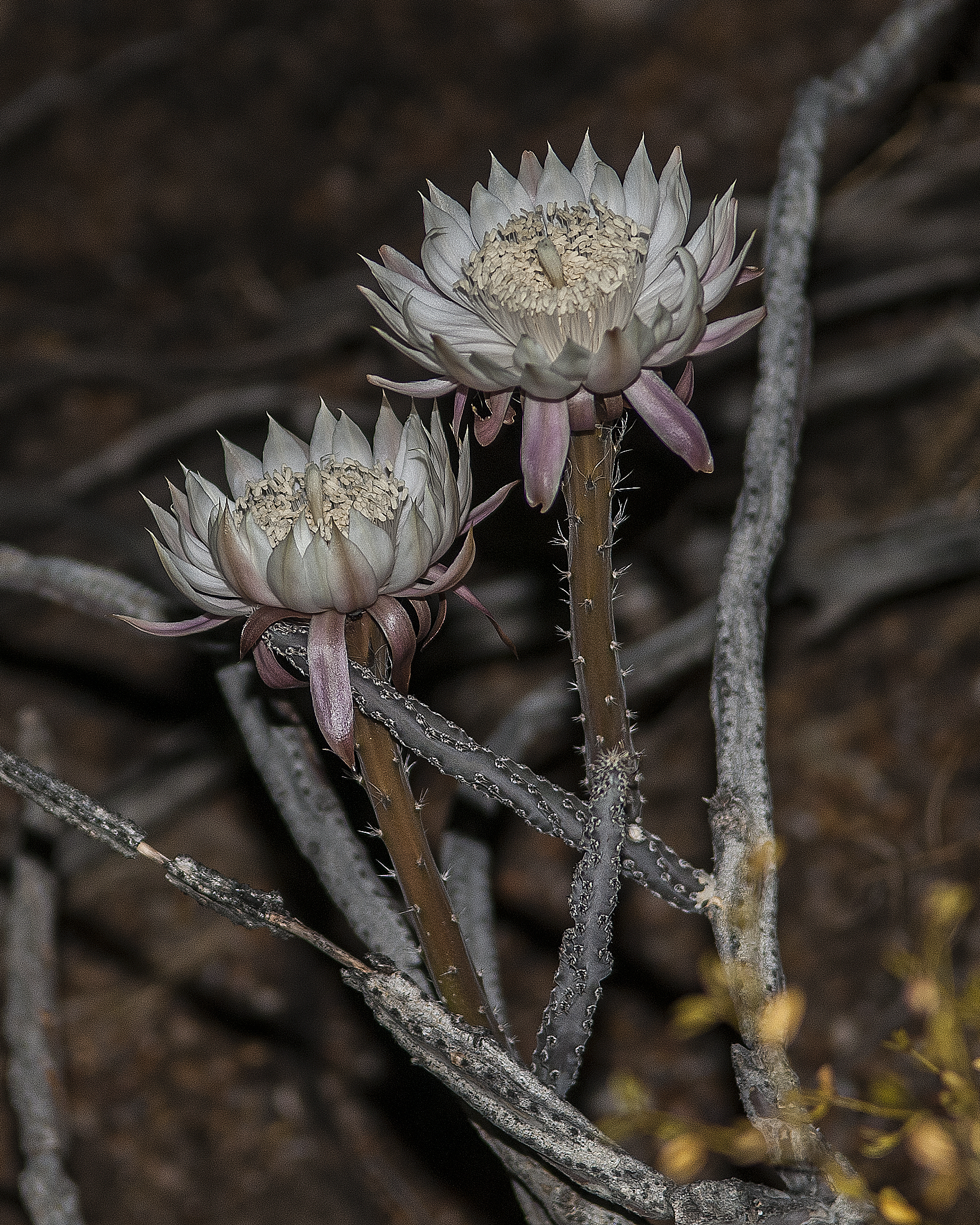
Wildflowers of Southern Arizona
Night-blooming Cereus.
Peniocereus greggii.
Cactus (Cactaceae) family.
Duration: Perennial. Protected Status: No status in Arizona, but endangered in New Mexico. General: Slender and erect to sprawling but usually inconspicuous, the roots are deep, large and turnip shaped, the stems are gray green to gray and simple or with 2-5 branches that are each 40-120 cm tall, it is narrowed toward base and has 4-6 prominent ribs. Spines: Areoles are 12 mm apart along ribs and circular to elliptic, each 2-5 mm by 2 mm with 11-15 spines per areole, usually in 3 vertical rows, the abaxial 3-5 spines are appressed and yellowish white throughout or only at tips and are 3 mm and puberulent when young, the adaxial spines are black, subulate and only reach 1 mm. Flowers: Nocturnal and 15-25 cm in diameter, the scales of flower tubes are green and tipped red or brown, the outer tepals are greenish white with brown to reddish midstripes, while the inner tepals are white or lightly tinged cream, they are 4-7 cm and attenuate to mucronate with stamens about 2.5 cm long and anthers that are cream yellow, with a white style, 10-14 cm. Fruits: Bright red, darkening in age, it is ellipsoid and 60-90 mm by 40-50 mm. Ecology: Found under trees and among branches of bushes and trees in sandy or gravelly loams, on edges of washes and on slopes of small hills from 1,000-3,500 (305-1067 m); flowers spring and summer. Distribution: s AZ, s NM, s TX; south to c MEX. Notes: Usually flowers on one or two nights in late May, June, or July. The perfume is remarkable.Flowers are a showy, ghostly white and fruits are pear-shaped and red. Vegetatively distinguished by having erect, branching, thin stems < 2cm diameter with 4-9 prominent ribs; spines but no glochids in areoles; and spineless fruits. Often found in nurse associations under Larrea, Prosopis, and Parkinsonia. Ethnobotany: Root taken as a cardiac stimulant, as a salve for sores, for diabetes, the flowers and fruits used for food, roots and stalks were eaten. Etymology: Peniocereus is from Latin cereus for waxy, while greggii is named for Josiah Gregg (1806-1850).
Santa Catalina Mountains
Sabino Canyon Recreation Area
Location: Near junction of Esperero and Bear Canyon Trails.
7/14/19 at 4:30 AM
Notes: Lower images show growth over a 6 day period up to full bloom on 7/14/19.
See SEINet Pictures and Description
See FireFly Forest Pictures and Description


 Sabino Canyon 7/14/19 0430
Sabino Canyon 7/14/19 0430
 Sabino Canyon 7/14/19 0430. Polinator arrives
Sabino Canyon 7/14/19 0430. Polinator arrives
 Sabino Canyon 7/14/19 0430
Sabino Canyon 7/14/19 0430


 Sabino Canyon 7/8/19
Sabino Canyon 7/8/19
 Sabino Canyon 7/10/19
Sabino Canyon 7/10/19
 Sabino Canyon 7/12/19
Sabino Canyon 7/12/19
 Sabino Canyon 7/12/19
Sabino Canyon 7/12/19
 Sabino Canyon 7/13/19, 8:30 PM
Sabino Canyon 7/13/19, 8:30 PM
